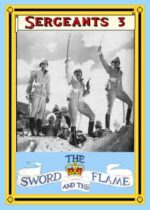LMW Works, LLC publishes historical tabletop wargame rules and educational games, historical and spiritual non-fiction, and consumer catalogues. At this time, LMW Works, LLC does not publish fiction. The company headquarters is in Hanceville, Alabama.!
Philip J. and Lynne Viverito are co-owners of LMW Works, LLC and have been publishing manuscripts and catalogs since 1998. They started the business near Buffalo, NY, but moved production to Alabama in 2013. The company currently has an offering of over one dozen titles and is now accepting manuscripts.
LMW Works is best known for its Classical Hack series, through which tabletop gamers can learn the tactics used by some of the greatest military leaders of the ancient world. The Classical Hack series spans more than 4,000 years of military history, from the campaigns of the Old Testament through The Crusades and the rise of Feudalism.
Our Catalog
Holy Hack, Hacking by the Book, explores the battles that shaped the pre-Christian world from the times of the great Egyptian dynasties through the rise of the Babylonian Empire. Homeric Hack examines the individual struggles and major military campaigns during the times Homer and the Trojan War. Classical Hack: Second Edition delves into the conflicts and conquests that helped shaped civilization from 600 BC to 600 AD, as illustrated by the cover art of Alexander Crossing the Granicus River by Peter Connolly, F.A.S. Classical Hack: Scenarios Rome focuses specifically on Roman military campaigns, from 750 B.C. to 250 A.D. Hack in the Dark ushers in the Dark Ages from the fall of the Roman Empire through the rise of the legend of King Arthur, and Knight Hack delves deeper into the Middle Ages as Great Britain and France rise as formidable European military powers.
Moving forward on the historical timeline, LMW Works enters 16th Century England with Pike Hack: the Road to Dunbar. This volume explores the three civil wars that reshaped the political and economic structures of Great Britain in the age of Cromwell. Eagles, Swords, & Bayonets closes out the 16th Century by revisiting the Napoleonic era and the battles that made France an imperialist power.
What collection of gaming systems
What collection of gaming systems would be complete without a foray into the American Civil War? LMW Works and author Scott Monsour capture the battles that marked the bloodiest conflict in American history in Rally 'Round the Flag. This fast paced, easy-to-grasp game system teaches authentic military strategies used by the North and the South between the years 1861 and 1865.
Gamers can recreate modern and futuristic warfare with three LMW Works' titles: Panzer Truppe (by Chris Pagano), Snipers! Duck, Dodge, & Shoot (by James Birdseye), and Hyperspace Hack (by Russ Lockwood). In Panzer Truppe, gamers can recreate the legendary tank battles that marked World War II as the first truly technological war. Snipers! Duck, Dodge, & Shoot places gamers in the rugged Italian countryside to fend off encroaching German forces. Part of the challenge is trying to engage troops under brutal weather conditions and conducting skirmishes in formidable Apennine Mountains. Hyperspace Hack looks to the future of aerial warfare by putting the gamer in charge of an armada of 50 or more interstellar fighters, complete with three-sided battles, crew promotions, and planet-killing lasers!
LMW Works product list
Classical Hack Series
Holy Hack
Knight Hack
Classical Hack
Scenarios Rome
Hack in the Dark
Scenarios Macedonia
Age of Enlightenment
Pike Hack
Eagles, Swords & Bayonets
Civil War Era
Rally 'Round the Flag
Modern Warfare
Panzer Truppe
Hyperspace Hack
Snipers! Duck, Dodge, & Shoot
LMW Authors
Jim Birdseye
Chris Pagano
Russ Lockwood
Scott Monsour
Philip J. Viverito
Richard Kolhbacher
LMW Distributors
Noble Knight Games
On Military Matters
Golden Distribution
Military Miniatures USA
Old Glory 25s
Scale Specialties
Brookhurst Hobbies
Hanceville
AL 35077
LuXLu, in other words Luca Canese and Luigi Maini, have been passionate about board games and wargames for decades and have always been looking for a game that can fully satisfy us.
This research ultimately pushed us towards the first attempts to write some game regulations on our own, first by making slight changes to existing regulations, then trying to create new ones in a frantic search for something new that could somehow renew. the mechanics of today's wargames and games.
In 2010 we therefore decided to self-produce our first game and export it outside the doors of our club so that a wider audience could enjoy it. Over the years, passing from one event to another, we have made ourselves known and appreciated thanks to a series of expansions and new games.
Majestic Twelve Games is a leading independent publisher of tabletop adventure games.
Majestic Twelve Games was founded in 1788 by a portly Viennese shopkeeper who little suspected the juggernaut into which his wenig Liebhaberei would develop. Initial forays into the infant Kriegspiel market were disappointing: witness the violently negative response to MJ12's first product, Wars of the Swedish Impressionists, which resulted in the company's warehouse being put to the torch.
While this was regarded as a minor inconvenience by the excessively-optimistic MJ12, it unfortunately resulted in a 200-year hiatus before the company's next release. In 1994, Starmada was unveiled to the general public as a "freeware" game via the rec.games.design Usenet board. As this event triggered neither widespread rioting nor arson, MJ12 considered it a resounding success.
Since then, MJ12 has shown itself to be a leader in the small-press wargaming community. Starmada is regularly cited as a favorite among starship combat gamers, and games such as Defiance, Grand Fieets, and Iron Stars have carved out sizeable niches among discriminating leadheads.
Majestic Twelve Games is a sole proprietorship, currently doing business in Castle Rock, Colorado.
If you want to know more about who we're not, follow this link, if you dare.
Castle Rock
Colorado 80104
The Mantic Team is made up of hobby enthusiasts and world class creatives that bring you miniature ranges such as. Deadzone, Kings of War and Warpath. Not to mention some of the best board games on the market like Hellboy. The Walking Dead, Here’s Negan, Star Saga (the futuristic dungeon crawler) and DreadBall. The Futuristic Sports Game
Bulwell
Nottingham
NG6 8PF
My real Name is Paul Ward, I was born in 1961, (I share my birthday with Nelson), I'm married with one daughter and five cats. I live in Woking in the south of England, the town where the Martians landed in War of the Worlds.
I work as a Teaching Assistant in a local School, a job I really enjoy as I get lots of time off and don’t have to work weekends. It’s also a fairly worthwhile thing to do, teaching the young. I get all the fun of being a teacher and none of the boring planning and marking stuff.
Previously I’ve had many jobs. I’ve been the manager of both a bookshop and a comic shop, I’ve worked as an illustrator and designer for many years and owned my own games shop. I’ve worked in factories and on building sites and for the software industry as a game designer.
My interests include games (obviously), not just wargaming but RPGs board games and video games too. I read a lot, mostly history for the factual stuff, I like first hand accounts especially; and a mixture of genres for fiction. I used to collect comics but nowadays I can’t be bothered. I occasionally buy a couple that look interesting but my collection has shrunk to include mainly the ones I read in the 60s and 70s when I was starting to read them and everything was new and exciting.
There are a few later gems and quite a lot of European stuff left in too.
I like films and have a fairly large collection of Blu-Rays and dvds.
I bought my first miniature in 1978, the Death Dealer figure by Ral Partha, and my lead addiction started from then. Previously I had owned many plastic Cowboys, Indians and US Cavalry made by Timpo and Britons and their like. I also had a well used set of 1/32 Airfix WWII figures. I'm currently rebuilding all these old collections in lead. Updates on my progress will appear on this site regularly of course.
I began Matakishi's Tea House in January 2006 as a way to chronicle my projects and it quickly grew in size and popularity with over 4.5 million visitors in it's 11 years of existence. Now, in 2017, It's got a new home here with a new hosting service and new ways to present my work.
Megalith Games Ltd. is a UK registered company founded in December 2008 by a core of two fanatical tabletop game experts. Which would be us – David and André.
Our goal with this company is to focus on releasing innovative games, especially in the tabletop and roleplaying genres.
Although our company registered in the UK and located in Germany We consider ourselves to be a european company. With an international focus, due to many business contacts in many different countries.
Our products will distributed across Europe in several languages. Also overseas in the USA and in the asian markets.
What We Do
Our purpose is to move the gaming hobby to the next level. By creating games which are both very playable and highly realistic!
Currently our work focussed on our miniatures skirmish tabletop game GODSLAYER, which been released on 1st October 2012.
What We Believe InOur primary aim is to release a series of miniatures-based games. Which will reach a new level of realism and playability, pushing the miniatures gaming hobby to a new level!
We invest tremendous amounts of care in our products because first and foremost. We are gamers, and we want them to be perfect for our gaming. Be they models, rulebooks or other accessories.
We always try our best to keep the cost of our products as low as possible, and even though there are circumstances we cannot influence which might force us to adjust our prices. We can assure you that we will always be fair to our customers and only raise prices where unavoidable! Our purpose is not to get rich, and we do not have stockholders we need to satisfy with high profits; we are a company of gamers for gamers!
via Angelo Biffi 32
20056 Trezzo sull’Adda (MI)
Italy
Mongoose Publishing was founded in 2001 and within 6 months became the UK’s largest publisher of role playing games. Initially concentrating on d20 based products, Mongoose Publishing's first book was the Slayers Guide to Hobgoblins. Part of the Slayers Guide series of books. Subsequent product lines followed in rapid succession with the release of the Encyclopaedia Arcane. Travellers Tales, Quintessential and Cities of Fantasy series of books.
Mongoose has earned a reputation for producing quality licensed products to sit alongside their generic fantasy ranges. And their first licensed book, the Judge Dredd roleplaying game, proved to be an instant hit. Further licensed products followed with roleplaying games based on Slaine. Babylon 5, Conan, Lone Wolf, Macho Women with Guns, Paranoia and Runequest. Mongoose's newest licenced roleplaying game. Traveller, brings back the classic science fiction roleplaying game.
In 2004 Mongoose Publishing launched it's first miniatures game. Mighty Armies, and this was quickly followed by the Origins award-winning Babylon 5 spaceship combat game. A Call to Arms. Mongoose’s first foray into plastic miniature games came in late 2004 with the innovative Gangs of Mega City One. A skirmish game based on the world of Judge Dredd. In the spring of 2005 Mongoose Publishing released the Starship Troopers miniatures game. A mass battle game in 28mm scale pitting humanity against a host of enemies in a battle for the species. Supported with a range of metal and plastic miniature releases, a year after its launch Starship Troopers had already won the Origins 'Best New Game' award and was supported by over 50 different releases.
Mongoose Publishing's miniatures games and roleplaying games continue to provide gamers with fantastic worlds in which to immerse themselves, and the company has become a recognised force in the world of hobby games.
52-54 Cricklade Road
Swindon
Wilts
SN2 8AF
Old Dominion GameWorks (ODGW) is a hobbyist owned small business publisher of tabletop game rules. We are an LLC company who wishes to bring quality games to the gaming hobby.
Historical Battlelines
Historical Battlelines: American Civil War Databook
BattleLines Scenario pack
Mein Zombie Core Rules
Mein Panzer Core Rules
Mein Panzer WW1 Data Book
Mein Panzer SCW Data Book
Mein Panzer WW2 Data Book
Mein Panzer Secret Weapons
Mein Panzer Korean War Data Book
Mein Panzer Arab / Israeli War Data Book vol. 1 1948-1956
Mein Panzer Junior
General Quarters 3rd Edition
Sudden Storm
Fleet Action Imminent
The Solomons Campaign
Post Captain
North Sea Campaign
Defending The Malay Barrier
Royal Netherlands Navy
Winchester Virginia
United States
22061
22601
Sam Mustafa Publishing LLC publisher of the Honour series of rulesets, including the Lasalle Napoleonic rules.
AurelianAurelian is a tabletop game of the Crisis of the Third Century. Can you hold the Roman empire together in the face of civil war, barbarian invasion, and war with Persia?
FreejumperFreejumper mixes role-playing, sci-fi and tabletop battles in a fun and social game about spaceship design, combat, smuggling, and adventures. Build your own ship, play with any number of friends using the ten adventures, or create your own.
LongstreetThe beautifully-illustrated full color 160-page book with all the basic and advanced rules, scenarios and grand campaign. The Longstreet book is a handy smaller (A5) page format with a sturdy double binding for regular use. Printed in the USA.
Maurice
RommelRommel is a tabletop game of great battles in the European and Mediterranean theatres of the Second World War.
The player takes the role of a general commanding an entire division, or elements of several divisions, or an entire corps or even an army. Units represent companies and battalions. Tens of thousands of men and machines clash for control of miles of territory. Make decisions about the application of air power, engineering, the use of reconnaissance, the commitment of mobile reserves, and many other things.
BlücherThe Hundred DaysWar To The Death
LasalleLasalle is the petit-tactical game of Napoleonic warfare. It comes with historical scenarios and an army-builder that allows players to create a huge variety of customized armies for different nations and theatres of the Napoleonic Wars. Lasalle is ideal for small tables and tournament play.
Might and ReasonMight and Reason is the grand-tactical game of 18th century warfare.
Haledon
New Jersey
07508
United States
Sergeants 3 publisher of wargaming rules.
About Us
"Why the name change?" ~ by Larry Brom
The new name for our rules publishing division, Sergeants 3, will certainly be no surprise to the many gamers who know me quite well. For others, let me clarify.
In 1939, my father took me to a movie theatre in downtown Chicago for the premier showing of "Gunga Din". The exploits of Sergeants Cutter, McChesney and Ballantine, and the Bhisti, Gunga Din, etched images in my young mind and soul that have stayed vividly with me to this very day. I still firmly believe that film is the finest movie ever made. Even today, when I view "Gunga Din" (which I do regularly), the sound of the pipes playing and the Highlanders singing "Bonnie Charlie" still manages to raise the hair on the back of my 75 year old neck. And for those of you who consider my game rules "too Hollywood" you are exactly right. And now you know why.
"Good job, Bugler".
"The Birth of Some Rules" ~ by Larry Brom
One of By Jingo!'s illustrious editors who shall remain anonymous has asked, nay insisted, that one of my first essays be a history of, and the motive for, writing The Sword And The Flame. I have reluctantly agreed to do this, but my better judgment gives me the sense that most gamers, like me, do not want to hear some lofty, pompous, "world-famous" rules author expound on the " soul-searching", "gut-wrenching" and "inner turmoil" associated with the creation of his true work of art. So, let me merely say that I wrote my first set of published rules because at that time colonial rules were almost non-existent and the one set I knew of did not suit me.
I became very interested in Colonial gaming in the early 1960's with the advent of Holgar Ericson's 25mm painted (not very well) SAE (South African Engineers) war game figures. I made the discovery of these "gems" in a toy store in NC when I went in to purchase some doll furniture for one of my daughter's birthday. Those amazing figures - resplendent in their orange boxes (about 16 or 17 infantry figures to a box) and costing about $2.50 per box, almost bowled me over. Strangely, this store in North Carolina had among their sets of mainly ACW troops, one box of British Colonials in scarlet tunics and white pith helmets, and 4 boxes of charging Zulu warriors. These five boxes were the start of this whole Colonial madness. (By the way, I did get the doll furniture too, for those of you who were wondering but, I can't recall the color or price!)
I now had the figures and the interest, but ahh, the rules.
I had been a subscriber to Jack Scruby's publications with many home grown rules and game concepts and in 1965 joined Doug Johnson's Colonial Society Bulletin (now Savage and Soldier) that offered additional colonial gaming ideas. To this point the only published set of gaming rules I had ever seen was a reprint of H.G.Wells' Little Wars circa 1913. Then, in the late '60's, I came across (whether in a magazine or a booklet) a set of Colonial Game Rules from England. I have no idea what they were titled but they were a well-crafted little set in the classic style of British game rules of that era. I had acquired more colonial figures by this time so I coerced my one gaming friend into having a go at colonial gaming. We eagerly played 4 or 5 games with this wonderful new rule set, having great fun but then realized that neither of us wanted to be the native force ! Where was the challenge ? Once the forces of the Empire were formed and ready and the Dervish or Zulus got in range, it was all over. Historic, but discouraging! No wonder no one played "colonials", no one was doing rules, and there weren't many figures available. Shortly thereafter, my friend moved out of the area and with no one to game with I concentrated on building more mainstream armies; ACW, Napoleonic and Franco-Prussian, and developing my own rules for each period.
It was now the early 1970's and more and more rule sets for miniature war gaming were available. Most of these were from Britain and a few from the U.S. (the ones I knew of). So I purchased a goodly number, played games with a few, and read all of them. Slowly, in my view, it became apparent that something was lacking . But what? Most of these rules were well crafted, offered some interesting mechanics (like "saving throws", which to this day still mystify me), introduced morale, some form of command control or influence, utilized masses of modifiers and myriads of other concepts to make table top games more "realistic".
Then came the revelation. I wasn't having any fun!! I was too busy with the game mechanics, thumbing through pages and cross referencing chart A.1 with C.2-e. Then and there I decided, no more. I would design my own rules for my own enjoyment. I would go back to my first love, British Colonials. I had small armies - all I needed were some rules and since I had been doing home grown versions for some time, I commenced.
All the rules I was aware of, and my own that I had written, were subjected to serious scrutiny based on what I thought I wanted to do with miniature painted military figures on a game table as a hobby and to have some fun. After some months, I settled on the five things I desired in a set of rules that in my opinion did not exist in the rules I knew of in the early '70's. Simply put, these factors were Enjoyment, Playability, Drama, Excitement and Historical Flavor.
Curiously, after I pinned my quest down to these issues and went back and scanned all the rules I was aware of, none of them made any reference in their Introductions or Designer Notes to these factors (and most of today's rule sets don't either). At that point, I determined I was out of the mainstream of miniature gaming and always would be. So, I could just design rules for myself using the above criteria, and relax and enjoy the hobby
Early in 1978, S. Craig Taylor contacted me (he was with Heritage Models in Dallas at that time) about the possibility of doing an introductory set of game rules for the Colonial era to be issued with miniature figure sets for the same period. After some more phone and letter communication, in June of 1978 I signed an original agreement and started on the rules; sometime between this date and the actual release of the rules in 1979, Taylor ended up with Yaquinto Games in Dallas.
Because these rules were designed 20 years ago, I would be hard pressed to share the exact reasoning and thought processes involved in the complete creation of the rules as they finally evolved. Other than always keeping my five main considerations regarding gaming rules uppermost in the development of the overall concept, I will highlight three issues I was determined to address with this, my first published rules attempt; 1) alternate movement (you move, I move) and firing (you fire, I fire), 2) excitement of hand-to-hand combat (most games didn't have it) and 3) measured move distances, i.e. (infantry move 6", cavalry 12", etc.)
I knew from the start there had to be Random Movement in some form or the other. Most games at that time did alternate movement. How wonderfully choreographed, while you are moving your units I leisurely watch every troop disposition and calmly plan every counter move I will make when it's my turn. No surprises, no hurried response from me and no excitement! I toyed with a number of techniques; How about an initiative roll (quite common now, but not in the '70's), high roll moves first ? Maybe not only high die moving first but actually moving that number of units? Make up "movement" cards by writing the name of each player's units on an individual card, shuffling them in a deck, turning them over, flipping the top card and moving that unit. This was the procedure I was going to use when one of my daughters asked, "Dad, instead of going to all that trouble, why don't you just use a deck of cards"? Now, I'm no fool, I know a brilliant idea when I hear it, and so my famous, "random move card innovation" was born! And it still exists today in many, many successful forms thanks to a young girl's common sense. The card deck also addressed and answered the random firing issue - same technique, same randomness. I was well on my way to the rules concept I wanted.
I have always believed that the most exciting moments in any wargame are, and should be, the hand-to-hand combats. These are the culminations of all our planning, maneuvering and evolutions on the table top. To close with the enemy, drive him from his positions and exert our moral superiority over his forces and win the day. The dullest close-in-combats I have ever participated in, or seen, in the past (and even today), are those where wonderfully painted figures or units with colors flapping in the breeze close with an enemy with shouts and screams, bayonets flashing, then comes a halt to resolve the combat phase which usually goes something like this; count the number of figures or units, consult the charts for point values, calculate a dozen plus or minus modifiers, eventually come up with a number value, then each player rolls one multi-sided die and a high total number wins the melee' with one die roll!! Where is the suspense, where is the drama? There is none! Any game system I have ever designed settles close-combat ultimately by pitting figure against figure or stand against stand and opposing players roll six-sided dice with simple modifiers and the high total wins; this is for each pair of opponents. A lot of die rolling, I know, but this is a contrived game mechanic to accomplish one thing - excitement. In our hobby of gaming with miniature figures we are pitting our skill, concepts, knowledge and luck against an opponent in simulated combat on a table top. My theory of eye-ball to eye-ball confrontation by rolling as many dice as we can for individual combat resolution is the closest we civilized beings will ever come to actually crossing swords, bayonets or tomahawks. And talk about suspense, drama and excitement , at any convention , anywhere, if all of a sudden one game table erupts in loud cheers, groans and finally exultation, the high probability is that a melee matching man for man or stand for stand was just culminated. I know because that's what happens at my games and I will guarantee it !
Measured move distances are probably the strangest aspect of gaming rules that we have ever embraced. The idea that two armies or forces on any given table top would always all move at exact precise distances is, and always has been, incredible to me. I won't even address historic justification that this is a fantasy, but merely put the issue into the framework of wargaming. Of course, control freaks love measured distances. It is absolutely wonderful during a game to have enemy cavalry on your flank and by firing a battery at them (you had to measure the range, of course) you know they are 48" away. Since they are cavalry in line and move 12", you smugly know that you have 4 turns to prepare for their attempt at outflanking you. What an exciting challenge! No risk, no drama, and it's a piece of cake. But not for me! I did, and still do, favor some form of random move distances in all the games I design and play to offset this artificial concept.
Once I had incorporated these major issues into the rules system I was formulating, I was close to completing the first draft of the rules. What remained was the tedious detail, formatting, and integration of all the charts and other necessary minutiae that encompass the creation of a workable, playable rules system that reflects a designers vision of battle in a particular historical period. Through all these phases of fashioning the rules framework are the endless and repetitive play-tests, play-tests, and more play-tests. This is the key to a workable, playable set of rules. And the correct group of play-testers is essential. I was extremely fortunate to have the Jackson, MS. War Game Society at my beck and call (ha!) This group was the most stubborn, opinionated, argumentative gathering of gamers the world has ever known and could tear apart any set of rules in two turns or less but, if you could hang in there with them, their revisions and suggestions were almost magic.
The first rough manuscript was submitted to the rules editor July 3, 1978 for his review. After lengthy dialogues between us, a 2nd draft was submitted August 28, 1978. The 3rd, and final, rules draft was sent to Yaquinto on January 22nd, (shades of Ishlandwana) 1979. Sometime that summer the rules were produced and released to the gaming community.
If you have stayed with me through all of this, maybe you have a feeling of how and why I created The Sword and the Flame rules. I have always been very pleased with the mostly positive response to them and appreciative of all of you stalwart gamers who were willing to take a chance on a rogue set of rules and played, endorsed and enjoyed them through the years. You realize, of course, that if you read this article, play Colonial games and embrace a slightly different approach to gaming, you are a renegade, an outlaw and outside the "main stream" of miniature war gaming. But have courage, my comrades, we are a force to be reckoned with and our numbers are growing. So, roll the dice, randomly move and enjoy yourselves, the game has just begun.
c/o Lori Brom
2527 S. Carrollton Avenue
New Orleans
LA 70118-3013








